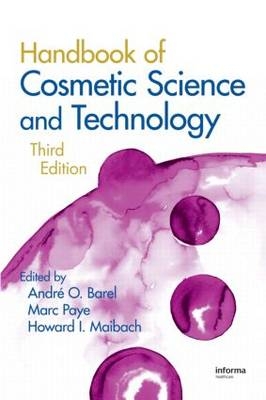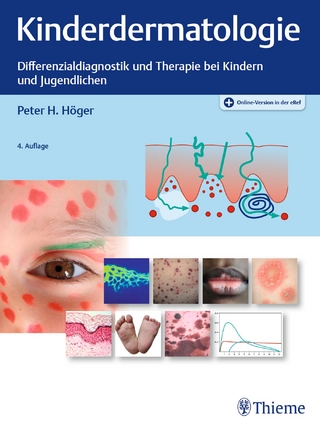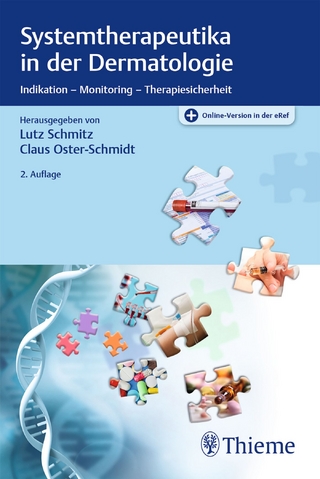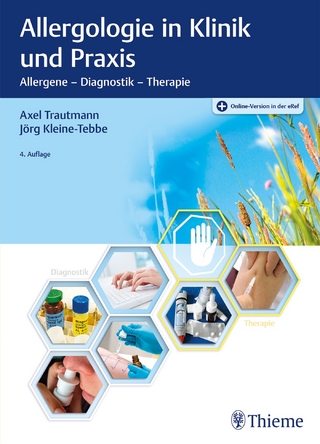
Handbook of Cosmetic Science and Technology, Third Edition
Crc Press Inc (Verlag)
978-1-4200-6963-1 (ISBN)
- Titel erscheint in neuer Auflage
- Artikel merken
Edited by a team of experienced and internationally renowned contributors, the updated Third Edition is the standard reference for cosmetic chemists and dermatologists seeking the latest innovations and technology for the formulation, design, testing, use, and production of cosmetic products for skin, hair, and nails.
New features in the Third Edition:
39 new chapters reorganized by skin functions
descriptions of ingredients, products, efficacy measurement, and mechanisms in each chapter
revised chapters on skin types, skin perception, and targeted products
new chapters on skin aging and cosmetics for the elderly
strong emphasis on testing and current methods used for testing, and the evolution of instruments for skin and hair testing
new ingredients, delivery systems, and testing methodologies
information on skin physiology and cosmetic product design
interactions affecting and attributed to cosmetic products
cosmetic ingredients, vehicles, and finished products
difference between pure cosmetics for enhancement and cosmetics used to treat
high quality standards in cosmetic products that improve appearance, protect their targets, and maintain natural functions
ANDRÉ O. BAREL is Emeritus Full Professor of General Chemistry, General and Human Biochemistry, Oral Biochemistry and Cosmetic Sciences at the Vrije Universiteit Brussel, VUB, Brussels, Belgium. He received his Ph.D. in Biochemistry and M.S. in Cosmetic Sciences from the Free University of Brussels, ULB, Brussels, Belgium. Dr. Barel is co-editor of Informa Healthcare’s first and second editions of the Handbook of Cosmetic Science and Technology. Dr. Barel has authored numerous publications in the field of Dermato-Cosmetic Sciences and is a member of the board of the International Society for Bioengineering and the Skin. MARC PAYE is Senior Research Associate in Colgate-Palmolive R&D, Inc., Brussels; “Maître de Conférence” at the University of Liège, Liège, Belgium. He received his Ph.D. in biochemistry from the University of Liège, Liège, Belgium. Dr. Paye is Co-editor of the first and second editions of Informa Healthcare’s Handbook of Cosmetic Science and Technology. He is Co-editor of Actualités en Ingénierie Cutanée–Volume 3 and author of more than 100 scientific publications and book chapters. Dr. Paye is also a member of several scientific societies and Industry associations. HOWARD I. MAIBACH is Professor of Dermatology, the University of California School of Medicine, San Francisco, California, USA. He has several decades of research experience in skin diseases and development of skin-related products and is a consultant to government agencies, universities, and the cosmetic industry. Dr. Maibach has published more than 2,000 papers and over 80 textbooks. He is also Co-editor of Informa Healthcare’s first and second editions of the Handbook of Cosmetic Science and Technology, Second Edition; Marzulli and Maibach’s Dermatotoxicology, 7th Edition; and Cosmeceuticals and Active Cosmetics: Drugs vs. Cosmetics, Second Edition, as well as numerous others.
I: Skin Types. Biophysical characteristics of the skin: Relation to race, sex, age and site. Functional map and age-related differences in the human face: nonimmunologic contact urticaria induced by hexyl nicotinate. The Baumann Skin Type Indicator: A Novel Approach to Understanding Skin Type. Ethnic Differences in Skin Properties: The Objective Data. Sensitive Skin: Sensory, Clinical and Physiological Factors. Neurophysiology of Self-perceived Sensitive-Skin Subjects by functional Magnetic Resonance Imaging. Tests for Sensitive Skin. II: Skin Hydration. Mechanisms of Skin Hydration. Hydrating substances. Skincare Products. Tests for Skin Hydration. Skin capacitance imaging. Confocal Raman Spectroscopy for in vivo skin hydration measurement. III: Skin barrier and pH. Correlation between TEWL and percutaneous absorption. Role of calcium in the regulation of skin barrier homeostasis. Percutaneous penetration enhancers: an overview. Tests for skin protection: barrier effect. Electron paramagnetic resonance studies of skin lipid structure. Human skin buffering capacity: an overview. Skin pH and skin flora. IV: Skin aging and sun care products. Skin aging: the causative factors. A Quantitative Approach to Age and Skin Structure and Function: Protein, glycosaminoglycan, water, and lipid content and structure. Glycation end products. Spectrophotometric Intracutaneous Analysis. The Visioscan-driven ULEV and SELS methods. New trends on antiwrinkle products: an overview. Antioxidants. UV Filters. Sun protection and sunscreens. Sun and after-sun products. Skin care products: Artificial tanning. Reconstructed human skin and skin organ culture models used in cosmetic efficacy testing. V: Skin perception. Skin feel agents. Silicones: a key ingredient in cosmetic and toiletry formulations. Sensory effects and irritation: a strong relationship. Decorative Products. Skin radiance measurement. Tribological Studies on Skin: Measurement of the Coefficient of Friction. Skin wettability and friction. VI: Skin Tolerance. Safety terminology. Classification of irritant contact dermatitis. Principles and mechanisms of skin irritation. Mechanism of skin irritation by surfactants and anti-irritants for surfactant-based products. In vivo irritation. Noninvasive clinical assessment of skin irritation/inflammation. Detecting skin irritation using enhanced visual scoring: A sensitive new clinical method. Sodium lauryl sulfate-induced irritation in the human face: regional and age related differences. Irritation differences between genital and upper arm skin and the effects of emollient application. Ethnicity as a Possible Endogenous Factor in Irritant Contact Dermatitis: Comparing the Irritant Response Among Caucasians, Blacks, and Asians. In vitro skin irritation testing on SkinEthic TM reconstituted human epidermis: reproducibility for 50 chemicals tested with two protocol. Reconstructed corneal and skin models. Sea Water Salts: Effect on inflammatory skin disease. Allergy and hypoallergenic products. Operational definition of a causative contact allergen–a study with 6 fragrance allergens. Anti-itch testing (antipruritics). Comedogenicity in Rabbit: Some cosmetic ingredients/vehicles. VII: Targeted Cosmetics. Skin Whitening products. Skin Whitening: new Hydroquinone combination. Anti-cellulitis products. Baby care products. Cosmetics for the elderly. Antiperspirants. Deodorants. Revulsive products: way of action and evaluation of their efficacy. Cooling ingredients and their mechanism of action. Oral Cosmetics. Hair conditioners. Hair measurement. The Normal Nail. Nail Cosmetics. VIII: Cosmetics vehicle. Surfactants: Classification. Encapsulation to deliver topical actives. Elastic Vesicles as Topical/Transdermal Drug Delivery Systems. Polymers' Effect on Chemical Partition Coefficient between Powdered Human Stratum Corneum and Water. IX: Ethics and Regulations. General concepts of ethics in human testing. Values and limitations of bioengineering measurements. The current EU regulatory context. Recent changes in the US regulatory context.
| Erscheint lt. Verlag | 3.3.2009 |
|---|---|
| Zusatzinfo | 200 Illustrations, black and white |
| Verlagsort | Bosa Roca |
| Sprache | englisch |
| Maße | 178 x 254 mm |
| Gewicht | 1701 g |
| Themenwelt | Medizin / Pharmazie ► Medizinische Fachgebiete ► Dermatologie |
| Technik ► Umwelttechnik / Biotechnologie | |
| ISBN-10 | 1-4200-6963-2 / 1420069632 |
| ISBN-13 | 978-1-4200-6963-1 / 9781420069631 |
| Zustand | Neuware |
| Haben Sie eine Frage zum Produkt? |
aus dem Bereich



